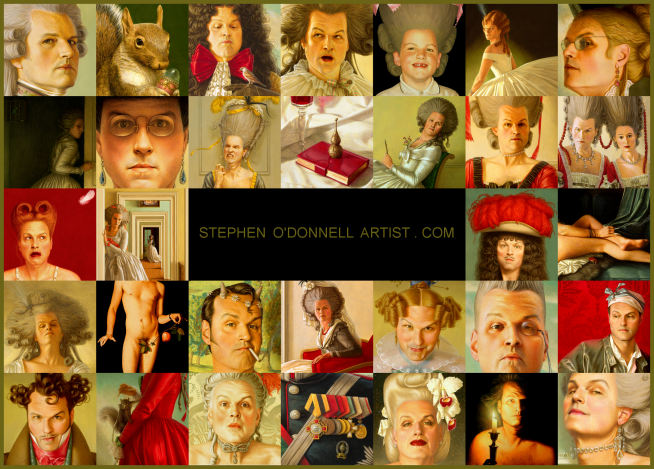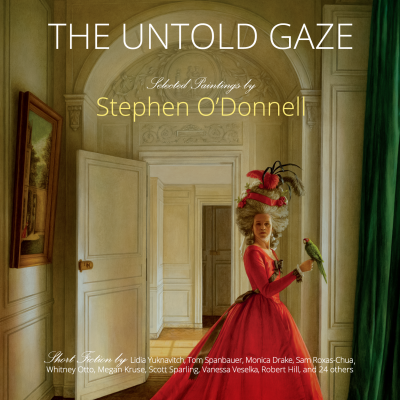 |
| Attributed to Léon Jan van Ysendyck, 1835. |
 |
| By Michel Martin Drolling. This is usually dated 1835 on the internet, but I think it more likely 1825, when he would have been eleven. |
 |
From the Album du Bal costumé donnée par S.A.R. Madame, Duchesse de Berry le 2 mars 1829 aux appartements des Enfants de France aux Tuileries,
colored lithograph after Eugéne Lami, 1829. |
 |
| Louis-Philippe, duc d'Orléans en uniforme de colonel-général des Hussards, et de ses fils le duc de Chartres et le duc de Nemours, by Louis Hersent, circa 1830. |
 |
Le duc de Nemours et le maréchal Gérard dans la tranchée de la citadelle d'Anvers, décembre 1832, by Victor-Amédée Faure, 1837.
The artist, Faure, was the brother of my wife's great-great-great-great-grandfather. |
 |
Le roi Louis-Philippe entouré de ses cinq fils sortant par la grille d'honneur du château de Versailles après avoir passé une revue militaire
dans les cours, 10 juin 1837, by Horace Vernet, 1848. Left to right: François, prince de Joinville; Antoine, duc de Montpensier; Ferdinand-
Philippe, duc d'Orléans; Louis-Philippe; Louis, duc de Nemours; Henri, duc d'Aumale. |
 |
| By Franz Xaver Winterhalter, 1939. |
 |
| Miniature by Sir William Ross, 1840. |
 |
| Marriage of the duc and duchesse de Nemours in the chapel of the château de Saint-Cloud, 27 April 1840, by Félix-Henri-Emmanuel Philippoteaux, 1847. |
 |
| The couple surrounded by his parents and family, including Léopold I, King of the Belgians; he was married to Louise d'Orléans, eldest daughter of Louis-Philippe. |
 |
| By Franz Xaver Winterhalter, 1843. |
 |
| In a costume worn to a ball at Buckingham Palace, 6 June 1845, watercolor by Eugéne Lami, 1845. |
 |
| 1870. |
 |
| Circa 1880s. |
 |
| Circa 1890s. |
*
Louis Charles Philippe Raphaël d'Orléans, duc de Nemours (25 October 1814, Paris – 26 June 1896, Versailles), second son of Louis-Philippe, King of the French, and his wife Marie-Amélie de Bourbon-Siciles. Born at the Palais Royal during the first year of the Bourbon Restoration, at the age of twelve he was nominated colonel of the first regiment of chasseurs. And after his father had assumed the throne, in 1830 - only sixteen - he was made a
chevalier of the
Ordre du Saint-Esprit and entered the
Chambre des Pairs. The following year he was nominated to become the first king of the Belgians, a prize which would go to his brother-in-law Leopold, Duke of Saxe-Coburg and Gotha. He fought in Algeria on three separate occasions - 1836, 1837, 1841 - as a commander during the latter two. He also made official visits to other royal courts - particularly that of Great Britain - during the 1830s and '40s. In 1840, he married Victoire of Saxe-Coburg and Gotha - niece of Léopold, King of the Belgians, first cousin of both Queen Victoria and Prince Albert - at the château de Saint-Cloud. They would have four children. After the revolution of 1848, and his father's abdication, he joined the extended Orléans family in England. His great aim in the first decade of exile - especially after the death of his father in 1850 - was to broker a reconciliation between the two branches of the House of Bourbon, something he saw as necessary if there were to be any hope of restoring a French monarchy. Negotiations continued until 1857, but were ultimately fruitless. In that same year, his wife died after giving birth to their fourth child; her husband never remarried. In 1871, after the fall of the Second Empire, the exile imposed on the french princes was lifted and his rank in the army was restored. After his retirement, he continued to act as president of the Red Cross until 1886, when the government imposed new restrictions on the princes of the blood and he withdrew from Parisian society. He died ten years later at the age of eighty-one, having outlived his wife, a daughter, and almost all of his siblings. He was interred in the necropolis of the Orléans family, the Chapelle royale de Dreux.



















The sky behind the 1843 Winterhalter looks like you painted it.
ReplyDeleteI taught him everything he knew!
Delete(Or maybe vice versa....)
He was a very handsome man even when elderly. And apparently involved in matters of importance, a very good sort of royal.
ReplyDelete